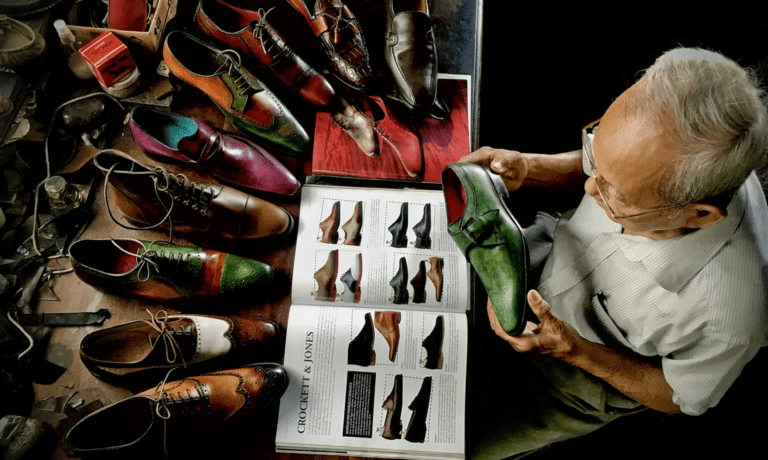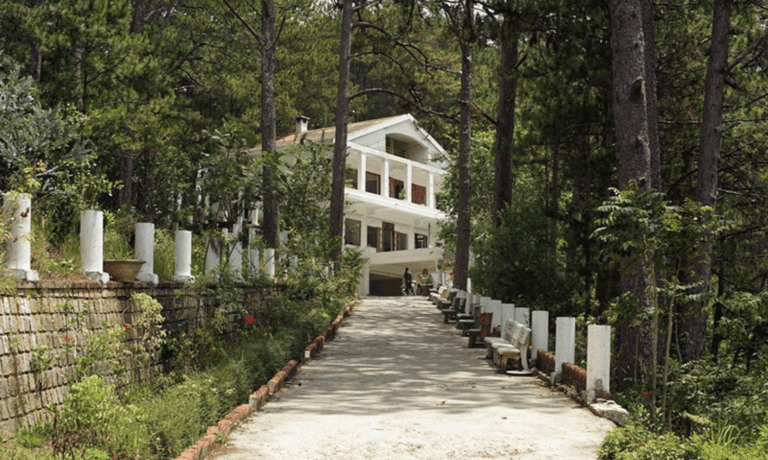At one time, Ho village in Song Ho commune, Thuan Thanh district (Bac Ninh) was famous for many types of votive gold, not folk paintings as now. Most households work as votive gold to make a living and watch paintings seem to fall into oblivion.
Fortunately, among the children born and raised here, there is a person who is dedicated and eager to restore the fading Clock painting line. He is Nguyen Dang Che (78 years old), an artisan of Dong Ho folk painting village.
Arduous revival of Dong Ho paintings
Artist Nguyen Dang Che from Ho village, Song Ho commune, Thuan Thanh district (Bac Ninh) was born into a family with a long tradition of making paintings. From a young age, he fell in love with painting and was passed down by his grandfather and father.
At that time, he only helped his father paint the lake, scanned the message on the paper, learned how to print paintings in the right colors, and brought the paintings to the yard to dry in the sun. Dong Ho paintings are associated with Mr.Che’s childhood and his love of painting has become deep since he did not know it.
However, Ho village at that time was famous for making votive gold, the profession of painting was almost forgotten. Motorbikes and trucks entered the village to transport goods everywhere to trade votive gold.
The people of Ho village realized that this profession was better than folk painting, so almost everyone traded and got rich quickly. At that time, the paintings “fresh chicken and pig” or “bright national color on spy paper” were replaced by the blue-red tickling color of the code.
Retiring after teaching at Hanoi University of Fine Arts for more than 30 years, in 1990, he went to live with his children and grandchildren in Ho village. Thirty years away from the countryside is also a long time for Ho village to have many changes.
Suffering from the fear of losing a career in Dong Ho folk painting, in early 1991, he decided to devote all the money saved during his teaching life to revive the ancient painting line. Woodcuts, which were considered commemorations, even discarded items of the people of the village, he went to buy them.
Not only that, he also spent a lot of effort and time to collect, finding more than 100 ancient engravings with a lifespan of hundreds of years, thousands of new engravings and nearly 200 paintings of all kinds, the most precious of which is the Thach Sanh painting set from a few hundred years ago.
According to Mr.Che, the most difficult was the 4-year period from 1991 to 1995. The Dong Ho folk paintings he made and sold were quite meager, the proceeds were not enough to invest in buying painting materials. At this time, he considered making paintings, making votive gold, and then taking votive coins to feed paintings.
This is a way to “take short and long farming” but also quickly find the output and market for Dong Ho paintings. Until early 1995, Mr.Che brought paintings to Hanoi to sell to foreign tourists.
He set up shop at 17 Chan Pang Street and asked friends in the Fine Arts industry to recommend him. Unexpectedly, the effect came significantly because customers came to him more and more, especially foreign tourists.
After that, he decided to create many unique products based on dó paper material as well as the traditional way of Dong Ho painting line to create a unique and rustic feature to attract customers as well as those who understand and love painting, especially folk paintings.
Thanks to creativity but not losing identity, the painting line has been loved and sold well by many people.
He said that during that time, he also sold more than 6,000 paintings, calendars on different topics and scenes such as rat weddings, coconut catches, storks, rice transplants, women catching pirates… has brought considerable income, even on crowded days, he earns 20-30 million VND/day just by selling paintings.
Now, his family has mastered more than 400 prints with 180 types of paintings, a collection of Dong Ho folk paintings including 100 different themes, 17 types of Four Quarters, Four Vases, and worship paintings. In particular, he owns many prints and woodcuts that are more than 200 years old and are considered unique engravings in Vietnam.
The quintessence of Dong Ho folk paintings
For a long time, Ho Village Painting Market has been famous everywhere because of the uniqueness and diversity of paintings by highly skilled artisans, so it attracts a lot of visitors to buy paintings. The art market here is bustling, the busiest is in December, meeting 5 sessions on the 6th, 11th, 16th, 21st and 26th of each year.
The market not only attracts traders and buyers of paintings but also attracts researchers and folk-art enthusiasts. Therefore, it has never appeared and been handed down two verses by the people “No matter who trades a hundred jobs/Remember in December, about the painting trade” to express the bustle and richness of the Ho village art market
Artist Nguyen Dang Che shared: “Dong Ho paintings are engraved on wooden boards, first of all a stroke, then how many colors the painting has, how many color copies are added. The painting background is dó paper made of dó bark, spread on a silvery layer from the canopy powder of the shell.
This paper is produced by hand from Dong Cau village (Bac Ninh) or Grapefruit village in Hanoi, then cut into many different sizes. To complete a Dong Ho painting takes a lot of time as there must be a few craftsmen specializing in ink and paper.
The colors are usually derived from natural materials: black is taken from burning bamboo leaves for charcoal; green is made from peel with melaleuca leaves; yellow again from flowers; crimson color taken from the stems, roots of the wine plant; paint color taken from mountain gravel; white is… These materials are mixed, then mixed with a quantity of glutinous flour when preparing to print to create a layer, making the paper harder after drying.
After printing into a painting, it is difficult to distinguish the difference when just looking at the color of the painting to know which is dry and wet because their colors are equally fresh. The shapes, one array next to the other, have a natural harmony.
To complete a product, the artist must be very elaborate and careful in each stage: Paint the lake on paper, dry the paper to dry the lake, sweep the phalaenopsis and then dry the paper to dry the scallop layer, when printing the painting must print each layer of color in turn…”
Mr. Che added that the use of colors to suit each subject is different such as a red background for jealous paintings; yellow and red backgrounds for warm, joyful scenes filled with spring colors on New Year’s Day paintings, light pink backgrounds for peaceful village paintings, blue backgrounds for hope, relaxation, etc.
Sometimes Dong Ho paintings are also decorated by artisans with instructional words or quartet and romantic poems such as on the painting “Clear as jade, white as ivory/Here climbs to please each other”, while on the painting Jealousy is “Stop swallowing anger to make good/Chi gives birth to humiliation, humiliate me.” Each Dong Ho painting is enough to show the pure and pure Vietnamese cultural capital.
Not only restored the line of paintings for many years, but also his family, all three generations from him, children and grandchildren are living prosperously by making paintings. A few years ago, Mr.Nguyen Dang Che established Dong Ho Folk Painting Co., Ltd. on an area of 5,500m2 specializing in restoring ancient engravings, producing, and training vocational for local children and introducing products to domestic and foreign tourists.
Many company customers have placed bulk paintings with him for export to foreign countries. Currently, besides the domestic market, Mr.Che also exports directly to Japan, the US, China, Taiwan, etc.
For those who have come to Ho village, having seen Dong Ho paintings by artist Nguyen Dang Ta, you cannot forget the lines and colors of the countryside and authentic Vietnam.
With unique artistic materials, through the talented creative capacity of Dong Ho paintings, it has sublimated into the national visual art, enriching the artistic treasures of mankind.


